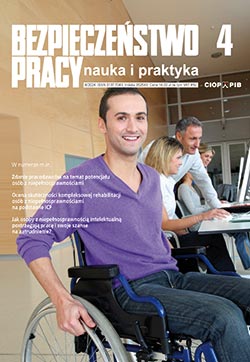Working conditions in Poland and in Europe – an overview of the results of European surveys
Magdalena Galwas-Grzeszkiewicz
Constant improvement of working conditions is the key to success when employing a strategy for sustainable development. Eurofound, which acts to improve living and working conditions, conducts regular pan-European surveys, such as the European Company Survey and the European Working Conditions Survey. This article presents selected results of these surveys, on issues such as the physical and social working environment, flexible working hours, availability of training and satisfaction with working conditions both in Poland and in the European Union.
Life-course perspective and the ageing of the workforce in the context of public policy
Magdalena Dobrzyńska
Demographic changes in European societies influence the ageing of the workforce and changes in career paths of workers in the European Union. Member States and EU agencies take various actions to counteract the negative consequences of the ageing of the workforce. This article discusses the importance and practical application of the life-course perspective in the activities of EU agencies. Its first part outlines the problem of the ageing of the workforce . Next, the article presents the life-course perspective as a theoretical concept in social policy and its relevance to the concept of ageing. Then, the article describes the legal basis, the programme and the activities undertaken by four EU agencies. The summary predicts future trends in public policies towards the ageing of the workforcetogether with arguments in favour of the need for a holistic approach.
Working conditions in selected hospital rooms – results of a pilot study on noise, illumination and microclimate
Bożena Smagowska, Dariusz Pleban, Andrzej Sobolewski, Andrzej Pawlak
The article presents an assessment of three physical factors of the work environment, i.e. noise, illumination and microclimate in selected rooms of a hospital. The rooms were selected in cooperation with occupational safety and health services. Quantities characterizing noise, illumination and microclimate were measured in the operating room and in the sterilization and pathomorphology rooms. For this purpose, the measurement methods included in the standards were applied. The pilot study showed that noise limits were exceeded in terms of annoyance and that there is a need to improve illumination in the operating room, in the sterilization room and in the histological laboratory. In the operating and in the sterilization rooms, the requirement of thermal comfort was met with the assumption of low physical activity of employees, while in the pathomorphology room, changes are necessary.
Falls from a height at construction sites caused by incorrect use of collective protection measures
Andrzej Dąbrowski
This article presents an analysis of accidents caused by falls from a height examined by the National Labour Inspectorate in 2013-2017. Accidents have been analyzed taking into account irregularities related to the use of collective protection measures. 121 events, which had occurred due to the lack or non-use of collective protection measures, were selected for detailed study. The article discusses 10 typical worksites and selected activities performed when accidents took place. It presents a statistical analysis of accidents caused by various irregularities in the use of collective protection measures and it presents descriptions of selected events. Using collective protection measures against falls from a height in the construction industry is an effective preventive technical solution, which does not physically burden workers and does not cause their discomfort at work. Therefore, legal provisions give them priority over personal protective equipment.




























